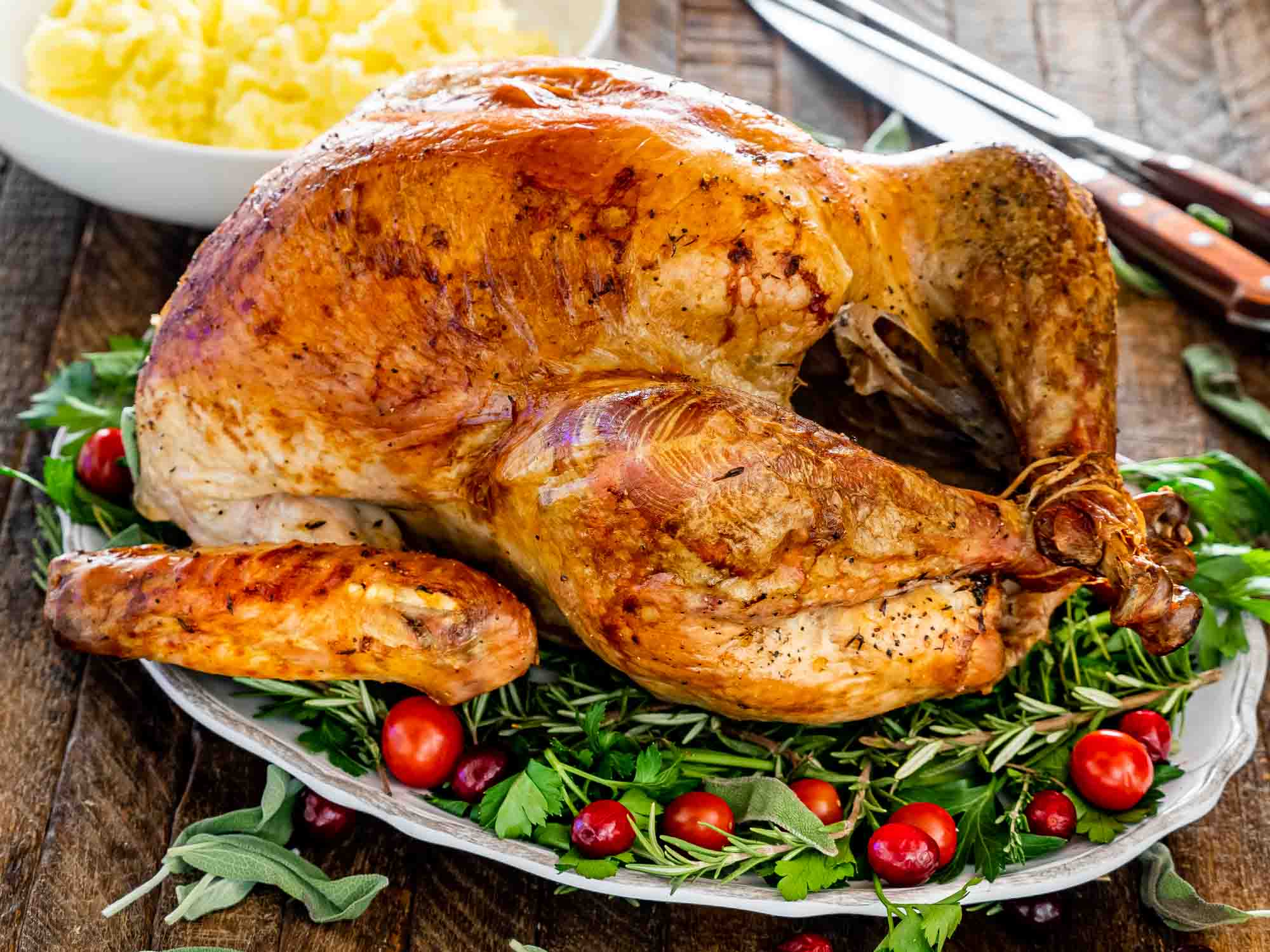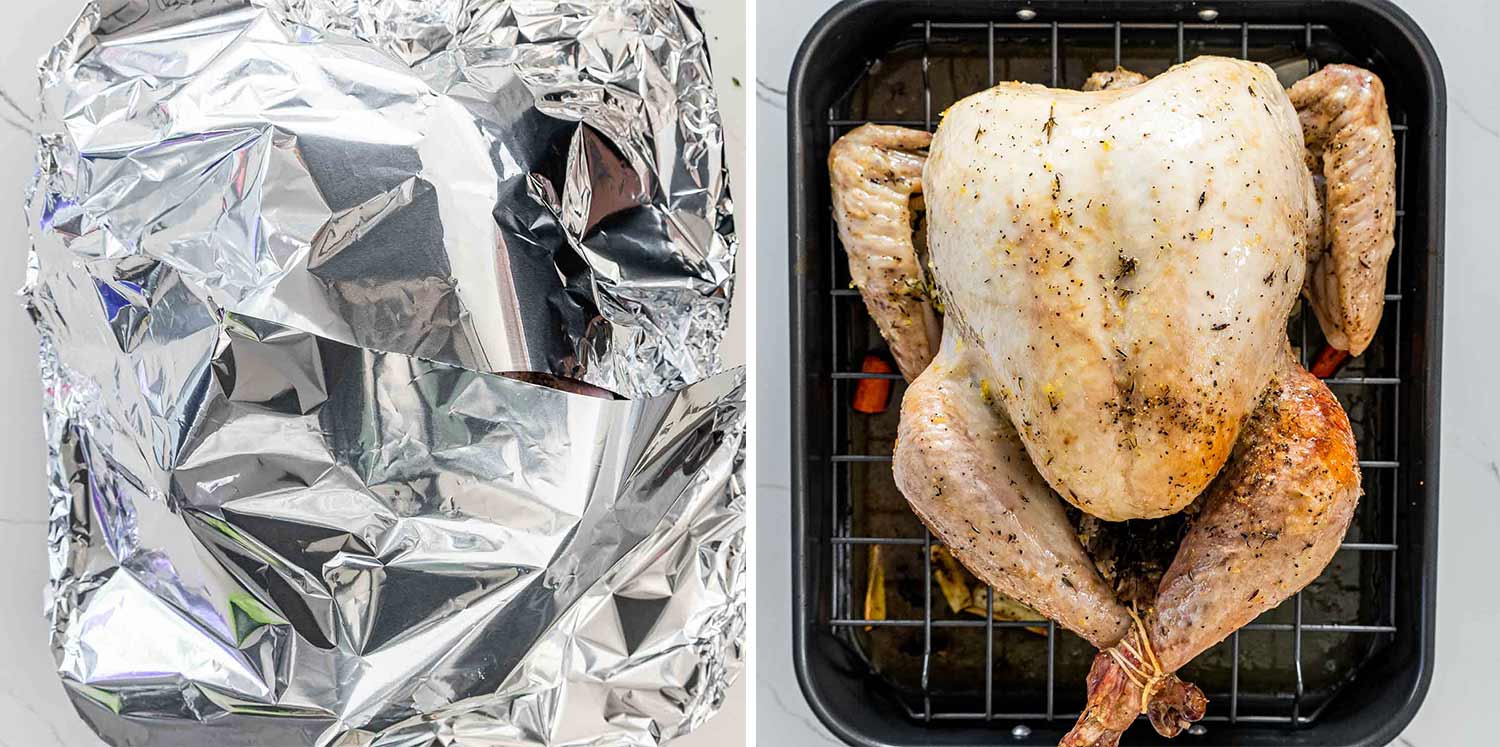How to Roast a Turkey – learn easy techniques to perfectly roast a turkey. Step by step instructions from start to finish.
Roasting a turkey can be an intimidating task, even for experienced home cooks. With its large size and lean white meat, it’s easy for turkey to end up dry and overcooked. That’s why many recipes suggest covering the turkey with foil or a lid during roasting to help keep it moist and tender. But is covering your turkey absolutely necessary? Or can you get a juicy, beautifully browned bird without it?
The Benefits of Covering Your Turkey
Covering your turkey while it roasts provides some major benefits:
-
It traps steam and moisture inside your roasting pan, which keeps the meat tender and juicy as it cooks. The foil or lid essentially creates a little oven-inside-your-oven, steaming the turkey from the inside out.
-
It protects the delicate breast meat from overcooking and drying out. Since white meat cooks faster than dark meat, shielding the breast with foil is an easy safeguard.
-
It prevents the skin from getting too brown or crispy before the interior is fully cooked Slowing down browning allows the inside to finish cooking first
-
It makes basting easier and helps keep basting liquids from evaporating too quickly You can baste right over the foil
Should You Always Cover Your Turkey?
While covering your turkey during roasting provides clear benefits, it isn’t strictly necessary in every case. Here are some instances when you could get away with leaving your turkey uncovered:
-
If you brine or spatchcock the turkey first. Brining infuses flavor and moisture, while spatchcocking drastically reduces cook time. Both prep methods set you up for a juicy bird.
-
For small turkeys (12 lbs or under). With less meat to cook through, moisture loss isn’t as much of an issue.
-
If roasted at a low temperature (325°F or less). The more gently your turkey cooks, the less likely it is to dry out.
-
When roasting an organic or heritage breed turkey. These birds have more fat and flavor to begin with.
-
If you stay vigilant with basting. Basting every 30 minutes mimics the moist environment of a covered turkey.
-
If your roasting pan has a V-rack. Elevating the turkey allows air flow for crisper skin.
-
For experienced, confident cooks. If you know your oven and turkey temping well, uncovered roasting is lower risk.
The takeaway is that while covering your turkey isn’t strictly required, it does provide a good safety net against overcooking. For novice roasters especially, using foil or a lid is cheap turkey insurance.
Step-By-Step Guide to Covered Turkey Roasting
Follow these simple steps for roasting a covered turkey with deliciously moist meat and crispy skin:
1. Prep the turkey.
Remove giblets, rinse cavity, trim excess fat, pat dry with paper towels, and rub with oil, salt, and pepper. Truss legs if desired.
2. Place turkey breast-side up in a roasting pan.
Use a pan large enough to fully contain the bird. You may add aromatics to the cavity or pan such as onions, garlic, herbs, or citrus.
3. Tent turkey with foil.
Cover entire turkey with a sheet of heavy duty foil, pressing down around edges to seal. Make sure no steam can escape.
4. Roast turkey covered at 350°F.
Figure 15-18 minutes per pound, less for a stuffed turkey. Check temp after 2 hours.
5. Uncover turkey during last 30-60 minutes.
Carefully remove foil once turkey reaches desired internal temp. Let skin brown and crisp.
6. Test doneness and let rest before carving.
Turkey should register 165°F in thickest part of breast and thigh. Rest 30 minutes before carving.
Creative Ways to Cover Your Turkey
While heavy duty foil works perfectly fine, you can also use other creative lid options:
-
A metal or disposable roasting pan lid
-
A baking sheet topped with foil
-
An inverted metal mixing bowl
-
A pizza pan or cast iron skillet
-
Cheesecloth drenched in butter, wine, or broth
Any heat-safe vessel that seals in steam will mimic the moist environment of foil. Get creative with your cookery!
Uncovered Turkey Roasting Tips
If you forgo covering your turkey, keep these tips in mind for the best shot at a moist, properly cooked bird:
-
Monitor temperature frequently and expect a slightly longer cook time. Without a cover, the turkey may cook unevenly.
-
Use a meat thermometer and check in multiple spots—don’t rely on the pop-up timer alone.
-
Baste every 30 minutes with broth, butter, or drippings to prevent skin and meat from drying out.
-
Tent just the breast with foil if it browns much faster than the thighs and legs. No shame in partial covering!
-
Roast at a lower oven temp (325°F) to allow the inside to finish cooking before the outside over-browns.
-
Rub skin liberally with oil or butter to encourage even browning and crisping.
-
Let turkey rest before carving for at least 30 minutes, tented loosely with foil.
With the right prep and carefully monitored roasting, you can absolutely roast turkey uncovered. But using foil or a lid provides helpful insurance for roasting newbies.
Frequently Asked Questions About Covered Turkey Roasting
Here are answers to some common questions about roasting a covered turkey:
Should I baste my covered turkey?
Basting is optional but recommended, as it adds flavor and ensures the foil tent doesn’t dry out. Lift foil and baste every 30-60 minutes.
What if my roasting pan doesn’t have a lid?
No problem! Use a sheet of heavy duty foil pressed tightly over the bird to trap in steam.
Can I use cooking spray instead of oil to prep the turkey?
Yes, just avoid butter or nonstick sprays, as these can cause the foil to tear and stick.
Should I cook stuffing inside a covered turkey?
No, stuffing slows cooking and increases risk of bacterial growth. Cook it separately.
How can I crisp the skin with foil on?
Remove foil during the last 30-60 minutes so the skin browns and crisps directly under the oven heat.
Can I cook an uncovered turkey from start to finish?
You can, but moisture loss is more likely without a cover trapping steam. Monitor temperature closely.
The Takeaway on Covering Your Turkey
While an uncovered turkey roast makes for great oven-side theater, taking the more controlled covered approach helps ensure a juicy, evenly cooked bird. For most roasters, especially novices, using foil or a lid is cheap insurance against a dried-out Thanksgiving turkey disaster. But experienced cooks comfortable with their oven can successfully roast turkey uncovered with the right prep and temping diligence.
Whether you prefer the covered or uncovered approach, let your turkey rest before slicing, use aromatics for flavor, and employ a meat thermometer for doneness. Follow those turkey roasting fundamentals, and you’ll be well on your way to serving the perfect holiday centerpiece!

Basic Roast Turkey Recipe
Well with Thanksgiving and Christmas right around the corner, it’s time to roast a turkey. I love this season, it’s my favorite time of the year. And how can you not? You can’t turn the TV on without seeing a Christmas movie on and I just can’t help myself, I watch them all. I can watch Christmas movies all day long.
So have you roasted a turkey before? Don’t be scared, it’s just a big bird. Over the years, I’ve watched my mother roast turkeys over and over again. I love everything about roasting a turkey. The smell in the kitchen, the holiday atmosphere all around and of course, eating that delicious turkey.
This recipe here for a roast turkey is a simple basic turkey recipe. I brushed the turkey with a lemon flavored butter, generously and I mean generously and seasoned it with salt and pepper.

Cover The Turkey And Roast

Cover the turkey with aluminum foil and cook covered for 2 hours. Remove the aluminum foil and transfer the turkey back to the oven.
